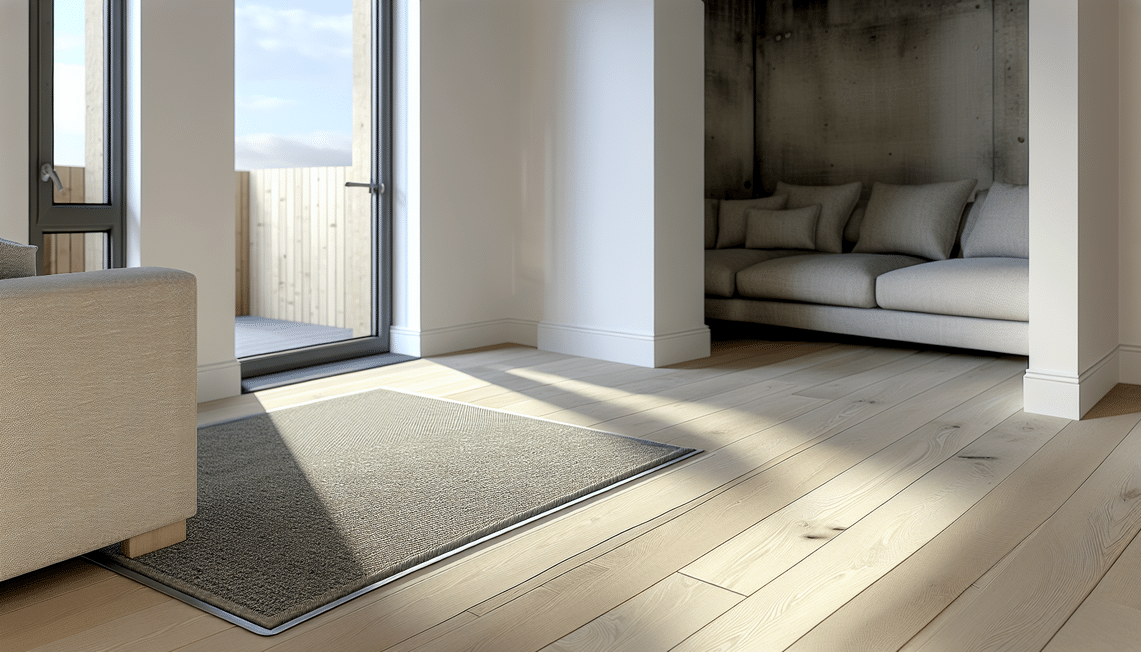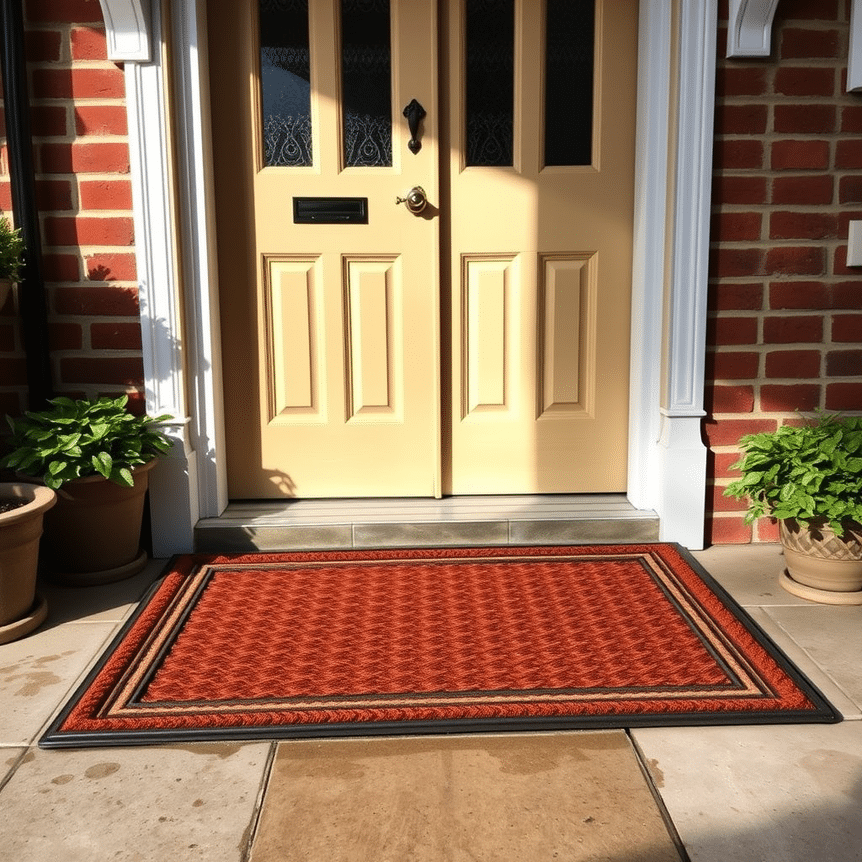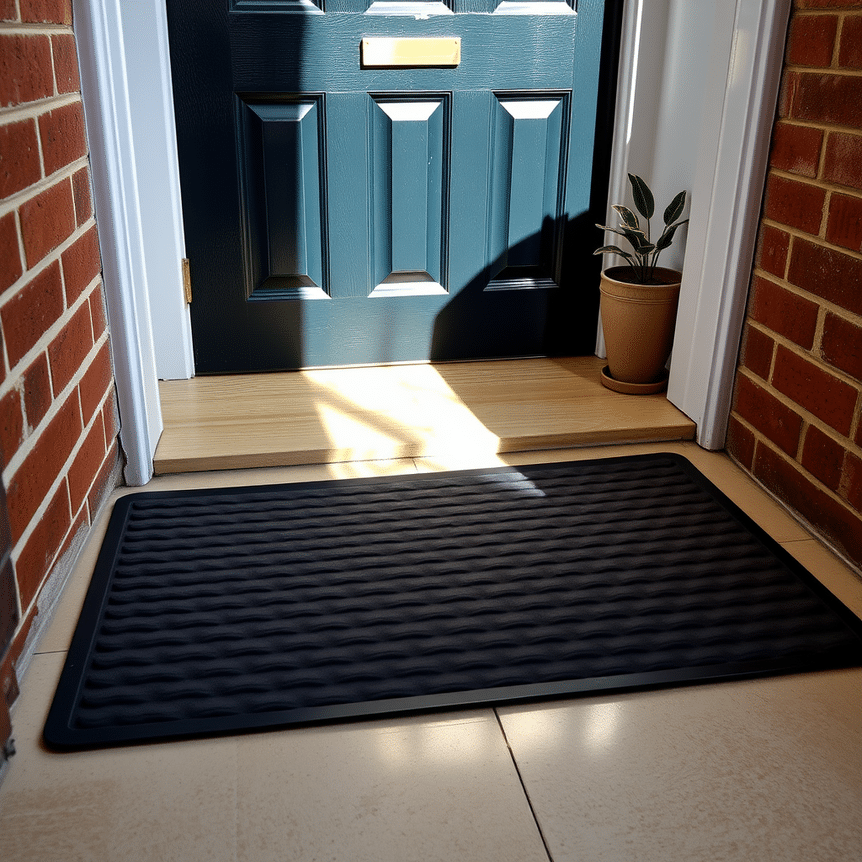Living in UK apartments and flats often comes with the challenge of shared living spaces, where everyday sounds can easily travel through walls, floors, and ceilings. Noise pollution from footsteps, neighbouring conversations, or mechanical vibrations can significantly disrupt peace, lower comfort, and even impact mental well-being. Finding an effective solution for soundproofing in these settings is paramount for creating a tranquil home environment. This is where high-quality noise-reducing rubber mats offer a practical and highly effective solution. Their inherent dense and elastic properties are specifically designed to cushion the impact of sounds and absorb airborne noise, dramatically reducing sound transmission between floors. Unlike conventional carpets or rugs, rubber mats maintain their acoustic performance over time, resisting compression and ensuring continuous noise reduction. Integrating these mats into your flat can transform it into a quiet sanctuary, enhance privacy, and support a better quality of life by minimising the stress associated with unwanted noise disturbances.
Why Rubber Mats Are Essential for Noise Reduction in UK Apartments and Flats
In the densely populated urban landscapes of the UK, the need for effective noise control in residential flats has never been greater. Shared building structures inherently transmit a range of sounds, from the thud of footsteps above to the murmur of voices next door. This constant ingress of noise can lead to heightened stress, disturbed sleep, and a general decline in living comfort. Noise-reducing rubber mats provide a straightforward yet powerful answer to these challenges. Their unique composition allows them to effectively absorb kinetic energy from impacts, preventing it from transferring into the building’s structure. This capability is crucial for mitigating impact noise – often the most disruptive type of sound in multi-storey dwellings. Furthermore, their density acts as an excellent barrier against airborne sounds, contributing to overall acoustic insulation. By investing in resilient rubber mats, residents can establish a noticeably quieter living space, promoting greater privacy and fostering a more serene atmosphere conducive to relaxation and focus. This durable soundproofing solution is a significant upgrade for any UK flat owner looking to improve their quality of life.
How Rubber Mats Absorb and Block Sound Vibrations Effectively
The exceptional acoustic insulation capabilities of rubber back door mats stem from their dual action in managing sound: absorption and blockage. When a sound source, such as footsteps, dropped objects, or even general vibrations, creates energy, the elastic and dense surface of the rubber mat immediately absorbs a significant portion of this energy. Instead of allowing it to transfer directly through the hard floor structure to the flat below, the mat dissipates it. This process is highly effective in lowering impact noise, which is often the primary concern for residents in shared buildings. Beyond impact absorption, the high-density molecular structure of rubber mats also serves as a formidable barrier against airborne sounds. These include common noises like conversations, music, or television audio, which can easily travel through less insulated floors.
By acting as a dense obstacle, the rubber mat impedes the passage of sound waves, reducing their intensity as they attempt to move between floors. This combination of vibration absorption and sound wave blockage not only minimises disturbances but also significantly improves the overall acoustics within a room by reducing echo and reverberation. This dual effect solidifies rubber mats as an efficient and comprehensive soundproofing material for preventing unwanted noise transmission in multi-family UK housing.
Choosing the Right Rubber Mat Thickness and Type for Optimal Soundproofing
The effectiveness of noise-reducing rubber mats in achieving superior soundproofing is heavily influenced by their thickness and type. Selecting the appropriate mat for your specific needs is crucial for maximising noise reduction without compromising floor height or usability. Below is a guide to help you choose:
| Thickness | Suitability for UK Flats | Key Benefits |
|---|---|---|
| 3mm | Light impact noise, small rooms, minimal floor height impact. | Subtle noise reduction, ideal for general household sounds and minor sound dampening. |
| 5mm – 6mm | Most common noise issues in flats, balanced performance, versatile. | Significant reduction in footsteps and moderate airborne sounds, offers a good balance between performance and floor height. |
| 10mm – 15mm | Severe noise challenges, multi-storey buildings, high Impact Insulation Class (IIC) requirements. | Premium soundproofing, excellent for heavy impact noise and superior airborne sound blockage, for when maximum acoustic insulation is required. |
Beyond thickness, the composition of the rubber mat also plays a role. Solid rubber mats generally provide superior damping properties compared to crumb rubber blends, offering better performance for both impact and airborne noise. When making your selection, consider the existing floor type (e.g., wood, concrete, laminate) and the dominant noise problem you’re trying to solve. For instance, installing a dense rubber mat beneath a laminate floor can dramatically enhance its acoustic performance, turning an echo-prone room into a much quieter space.
UK Building Regulations and Acoustic Performance Standards for Flats
For UK residents, particularly those in flats or contemplating property renovations, understanding the relevant building regulations concerning noise control is essential. The primary guideline is **Approved Document E (ADE) of Building Regulations**, which sets stringent standards for sound insulation between dwellings. Compliance with ADE is crucial for both new constructions and significant refurbishments, ensuring a minimum level of acoustic privacy and comfort.
Key acoustic ratings to familiarise yourself with include:
- IIC (Impact Insulation Class): This rating specifically measures a floor’s resistance to impact noise transmission, such as footsteps, dropped objects, or moving furniture. A higher IIC value indicates better protection against these intrusive sounds. Noise-reducing rubber mats are particularly effective at improving IIC values by absorbing impact energy before it can travel through the floor structure.
- STC (Sound Transmission Class): The STC rating quantifies how effectively a floor or wall system reduces airborne sound transmission, which includes noises like voices, music, and television audio. While primarily known for impact sound reduction, some denser rubber mats can also contribute positively to STC ratings by blocking the passage of airborne noise waves.
When purchasing noise-reducing rubber mats for your flat, it is highly advisable to ensure they are designed to contribute toward meeting or exceeding these regulatory standards. This is especially vital for projects where formal compliance checks are required, providing peace of mind that your soundproofing efforts align with UK legal requirements and contribute to a genuinely quieter living environment.
Practical Installation Tips for Noise-Reducing Rubber Mats
Achieving optimal noise reduction from your rubber mats hinges on correct installation. While seemingly straightforward, paying attention to detail can significantly enhance their acoustic performance. Here are essential practical tips to guide you:
- Prepare the Subfloor Thoroughly: Before laying any mats, ensure the existing subfloor is impeccably clean, completely dry, and perfectly level. Any debris, moisture, or unevenness can compromise the mat’s effectiveness and lead to future issues.
- Select the Right Thickness: Revisit your choice of mat thickness based on the specific noise levels you’re tackling and any constraints on floor height. Too thin, and it won’t be effective; too thick, and it might interfere with doors or room transitions.
- Lay Mats Flat and Seamlessly: Carefully unroll and lay the rubber mats flat across the entire surface. It’s crucial to avoid any gaps between individual mats; even small openings can create sound flanking paths, reducing overall soundproofing efficiency. While overlapping edges should generally be avoided unless specifically designed for it, aim for a tight, flush fit.
- Consider Layering Techniques: For maximum soundproofing, especially in high-noise environments, consider combining your rubber mat with other underlayments or a new carpet. Installing the rubber mat directly beneath a floating floor like laminate or engineered wood can dramatically boost the acoustic performance of the entire floor system.
- Secure Edges Thoughtfully: While securing mats in place, particularly if they are under another flooring layer, avoid using permanent adhesives that might damage the subfloor or void existing flooring warranties. For floating installations, the weight of the new flooring can often hold the mats securely. For area mats, non-slip backings or rug tape can suffice.
- Seal Gaps for Acoustic Integrity: Pay close attention to sealing any perimeter gaps around the edges where the mat meets the walls, as well as any joints. Acoustic sealant or tape can be used to prevent sound leakage, which is crucial for maintaining the integrity of your sound barrier.
Always consult the manufacturer’s specific guidelines for your chosen rubber mat, as installation methods can vary. For complex or large-scale installations, or if you are unsure about compliance with building regulations, seeking professional advice is always recommended to ensure the best possible results.
Cost-Effectiveness and Longevity of Rubber Mats for Acoustic Insulation
When considering soundproofing solutions for UK flats, noise-reducing rubber mats stand out as a highly cost-effective and durable option compared to many alternatives. Unlike extensive structural modifications or prohibitively expensive acoustic panel installations, rubber mats offer significant noise reduction at a more accessible price point. Their initial investment is notably lower than other soundproofing methods, making quality acoustic treatment available to a wider range of homeowners and renters. One of the most compelling advantages of rubber mats is their exceptional durability and resilience. Engineered to withstand constant foot traffic, heavy furniture, and general wear and tear, rubber retains its structural integrity and sound absorption capabilities over many years. They resist compression far better than foam or fibrous underlays, meaning their soundproofing performance remains consistent and reliable throughout their lifespan. Maintenance is minimal, typically requiring only regular cleaning to remove dust and debris, which helps preserve their acoustic properties. This low-maintenance profile, combined with their robust construction, translates into a long-term noise reduction solution that truly improves the quality of life for flat residents without incurring ongoing costs. Their easy integration with existing flooring, often without the need for major renovation work, further underscores their value. Given their balance of affordable pricing, superior effectiveness, and extended lifespan, rubber mats represent an excellent and smart investment for any UK flat owner seeking practical and lasting noise control.
Frequently Asked Questions About Noise-Reducing Rubber Mats
Do rubber mats really reduce footsteps and airborne noise in flats?
Yes, rubber mats are highly effective. Their dense, elastic nature allows them to absorb impact vibrations from footsteps and dropped objects, preventing sound transmission. They also act as a barrier to block airborne sounds like voices and TV noise, significantly reducing overall noise pollution in flats.
Can rubber mats be used on all types of flooring?
Rubber mats are versatile and compatible with most common flooring types, including wood, laminate, concrete, tiles, and even underneath carpets. Choosing the correct thickness ensures they integrate well without damaging the existing floor or causing undue height changes.
How thick should the rubber mat be for effective soundproofing?
For most UK flats dealing with moderate noise, a thickness of 5mm to 6mm offers an excellent balance of performance and practicality. For severe noise challenges or higher Impact Insulation Class (IIC) requirements, mats ranging from 10mm to 15mm are recommended for superior soundproofing.
Are rubber mats compliant with UK noise regulations?
Noise-reducing rubber mats contribute significantly towards compliance with UK Building Regulations, specifically Approved Document E. By improving both Impact Insulation Class (IIC) and Sound Transmission Class (STC) ratings, they help meet the required standards for sound insulation between dwellings. Always check product specifications for specific certifications when purchasing.
What maintenance do rubber mats require to retain acoustic performance?
Rubber mats are very low maintenance. Regular cleaning to remove dust, dirt, and debris is typically all that’s needed to maintain their resilience and soundproofing qualities. Avoid exposing them to harsh chemicals or sharp objects that could compromise their integrity.
Upgrade your apartment’s noise control easily and effectively with quality rubber mats. Discover a premium selection of durable noise-reducing rubber mats at Rugstars today to find your perfect solution for a quieter home.



